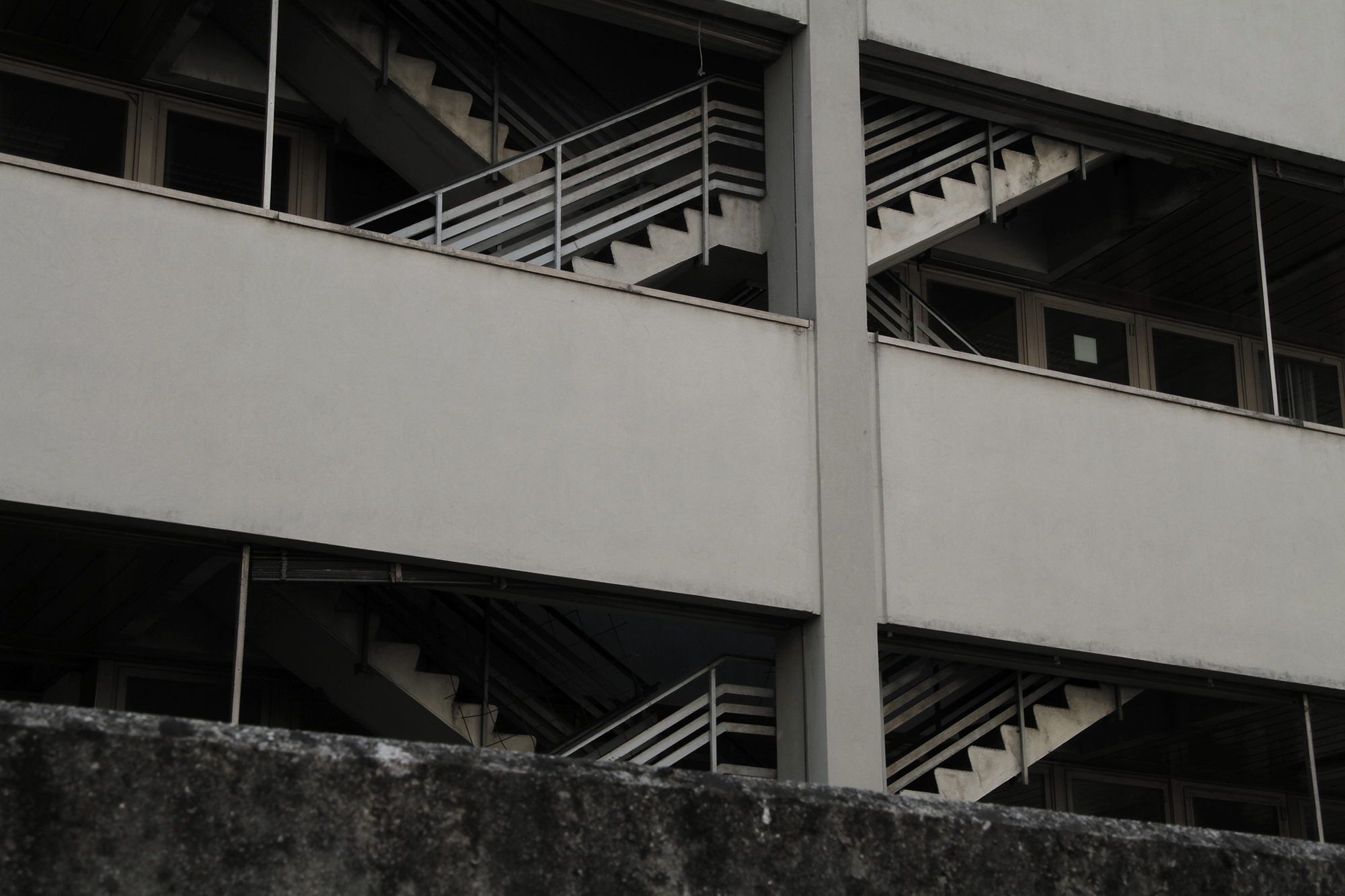lumo*

Global population is ageing at an unprecedented
rate - especially in Italy - bringing along several
diseases for people, the majority of which are directly related to senile dementia. From a demographic
study carried around Milan’s population, the elderly
suffering from Alzheimer’s Disease appear to be distributed
mainly across the suburbs of the city, where both
the lack of proper public transportation and the
flats - located inside of towering architectures (most times
without elevators) - function as physical barriers for
their lives.
How may we promote an active lifestyle for people
suffering from Alzheimer’s who live in the suburbs
and increase their safety and autonomy?


Fig. #02-03. In the first stages of Alzheimer’s Disease, elderly may feel lost when wandering around their neighborhood and slowly but gradually risk of losing their routine. // Portrait of a towering infrastructure providing stairs-only access in the suburban area of Milan, 2021.
Lumo is a “hardware navigator” with a simplified interface,
designed for the elderly suffering from early stage Alzheimer’s Disease who may feel lost while walking around their neighborhood. The device
enables them to reach their favorite destinations by projecting the
directions to follow on the ground, without the need for a smartphone.
This way, Lumo supports them in recovering their autonomy and
maintaining an active routine, while still being monitored remotely by their caregivers
through an integrated GPS system.

Fig. #04. Exploded view of Lumo displaying its core components by orthogonal assembly, 2019.
Designing for AD is a delicate and complex process, given
the controversy of the topic and the special attention it requires as a matter of
study. The main solutions to this issue often fall in medical-related prescriptions, while only few others
try to stimulate their cognitive and social abilities — although these products hardly address the needs of people that are even scared of walking their feet
out of the door.
Lumo is a pioneer project in this context, enabling the users to
set up their own routine and helping them recover an autonomous lifestyle in the
process. Its shape resembles that of a flashlight, and just like this ordinary tool, its purpose is to light up unknown paths. Its
essential and elegant design aims to eradicate the social stigma around
the disease, which is commonly mistaken for a manifestation of disability.
 Fig. #05. The gif image showcases an elderly man scrolling through Lumo’s recorded spatial inputs in Milan (2021). By turning the alluminium crown it’s possible to select a destination, which will be displayed on the dot matrix screen.
Fig. #05. The gif image showcases an elderly man scrolling through Lumo’s recorded spatial inputs in Milan (2021). By turning the alluminium crown it’s possible to select a destination, which will be displayed on the dot matrix screen.
The project is a collective work, with contributions from fellow designers Margherita Polo & Alessandro Marco Errico, coming from a semester-long research on senile dementia affecting the elderly who live in the Milanese suburbs.
The product was selected to enter the ADI Design Index in 2019, and was awarded with the prize ‘Eccellenze del Design Lombardo’ by the Regional Council of Lombardia (Italy), during the same year.

Fig. #06. The gif indicates how the track is displayed by the tool inside of a public parking in Milan (2021). Three arrows, which alternate accordingly while moving across a path, are projected on the ground to indicate the direction to follow. The laser lights may work during daylight as well as in the dark.

Fig. #07. A representative shot of Lumo being wielded as an emancipatory tool under the autumnal skies of Milan, 2021.
